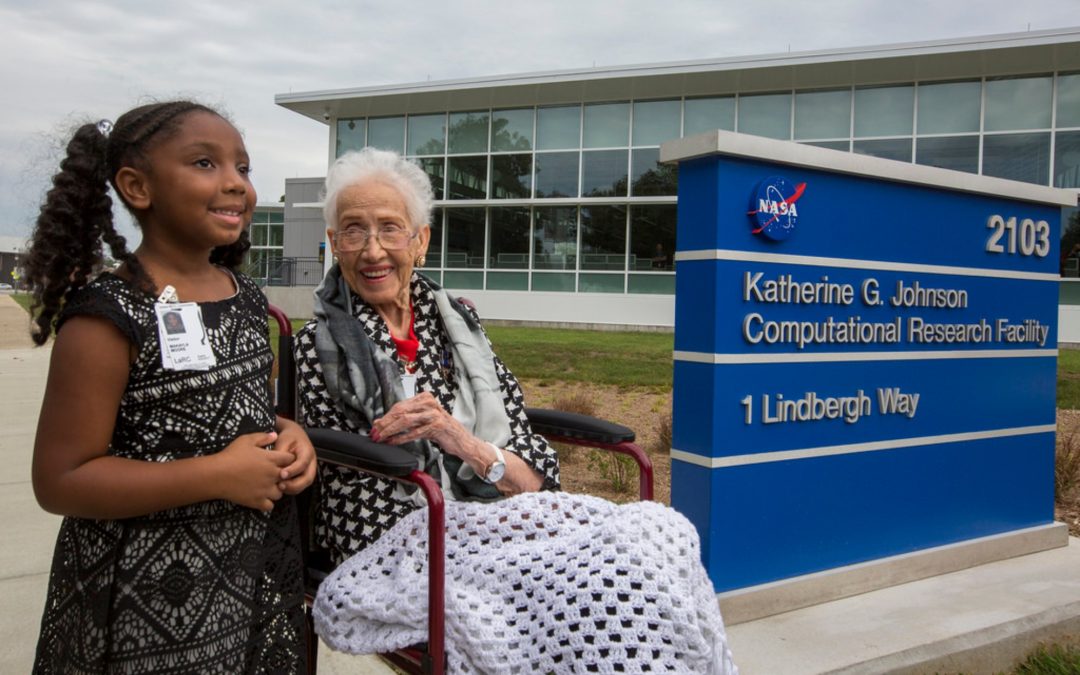by
_____
What kind of people get their name on a building?
Think deep-pocketed donors (The Stephen A. Schwarzman Building at the New York Public Library, the Smithsonian Institution, the Getty). Historical figures and luminaries (Lincoln Center, the Leonardo da Vinci Airport, StuyTown).
Just as long as those worthy individuals aren’t women. Out of millions of cities, towns, streets, neighborhoods, cultural and educational institutions across the US, very few bear the name of a female.
As essayist Ted Landphair pointed out in VOA News, “women have inspired relatively few place names, and even fewer once you eliminate saints, Greek goddesses and foreign queens.”
But last week NASA dedicated a building in honor of Katherine Johnson, the 99-year-old mathematician celebrated in the movie “Hidden Figures.”
Together with her colleagues Dorothy Vaughan and Mary Jackson, Johnson overcame racial prejudice in the 1960s to play a vital role in some of the country’s greatest aerospace achievements.
Now a new computational research facility bears her name, part of a movement to spotlight women whose contributions have long been overlooked or ignored. The recognition that redress is long overdue comes at a time when discussions about gender and power are becoming a larger part of the mainstream conversation.
But does it really matter whose names are plastered on buildings? What about imprinting women’s images on bills and coins, and in public statuary? Are these symbolic gestures or powerful signals?
An abundance of data shows they do matter, because the role model effect is real – in academia, politics, corporate life, and the public arena.
Iris Bohnet, a behavioral economist at Harvard, has demonstrated that hanging images of accomplished females on the walls actually boosts the women’s confidence and increases their willingness to compete in male-dominated environments.
In other words, seeing is indeed believing.
Institutional leaders around the country and the world are racing to embed that insight into bricks and mortar.
- Harvard Business School last year dedicated its first ever building named for a woman – the Ruth Mulan Chu Chao Center – after the the matriarch of a prominent Chinese-American family.
- In Annapolis, the US Naval Academy last year became the first of the three main service academies to name a building after a woman – a future cyber facility called Hopper Hall, after computer scientist and US Navy Rear Admiral Grace Hopper.
- In Ireland, Dublin City University last summer renamed three buildings on campus for trailblazers female scientists. With Project 50:50, DCU has made a commitment to name half of its major buildings after inspiring Irish women – Kathleen Lonsdale, Kathleen McNulty, and Mary Teresa Brück.
“We know that our daughters are capable of anything, right?” former US Treasury Secretary Rosa Rios said in a recent TedX talk. “But they need inspiration in order to have aspirations.”
Through her Empowerment 2020 initiative, Rios launched the Teachers Righting History Project, which prompts students and educators to include more stories of historical women in everyday learning. She’s also working with lawmakers and organizations like the National Women’s History Museum to recognize women’s accomplishments in public place.
“If we don’t do anything,” Rios told TIME, “we’re literally affecting the future of half the population.”
© Copyright 2018
________________________________
Want to talk? Reach me at dana@danarubin.com

